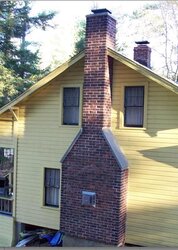I'm planning my install and have a couple quick questions. I read a few posts on this forum and this great article on how to make a block off plate {https://www.hearth.com/talk/wiki/make-a-damper-sealing-block-off-plate/}, but I was wondering...
- Is the Roxul to be used the Safe'N'Sound in 'bats' that can be purchased at the local big-box hardware store, like this Roxul Safe-n-Sound at Home Depot?
- Should I stuff some Roxul insulation at the top of the chimney around the liner, below the rain-cap, as well as above the block-off plate?
Last edited:



